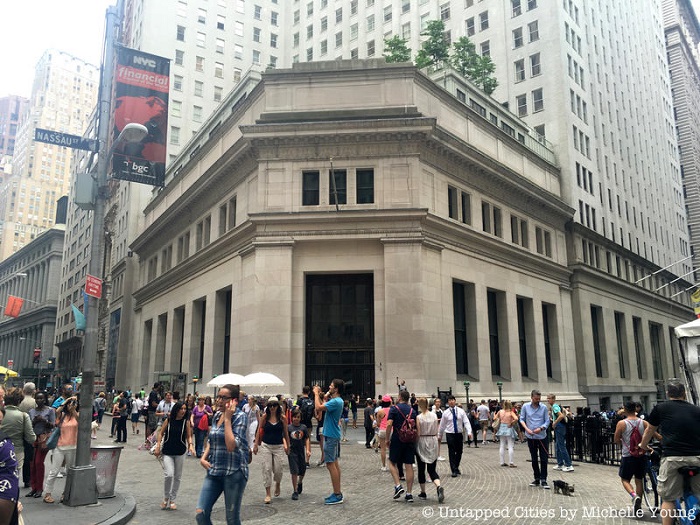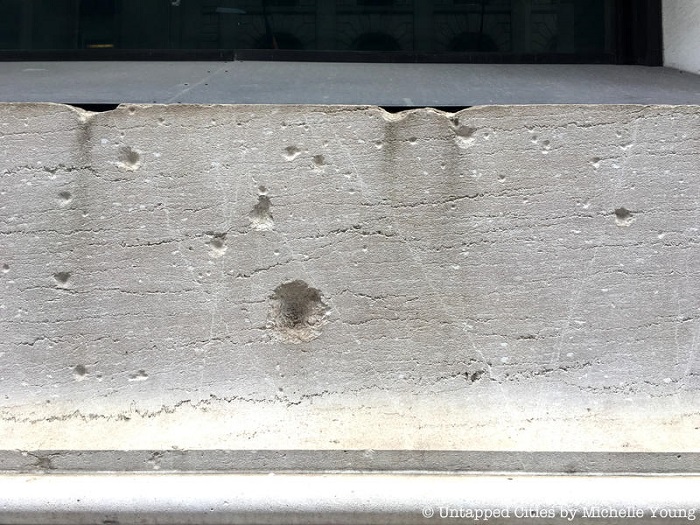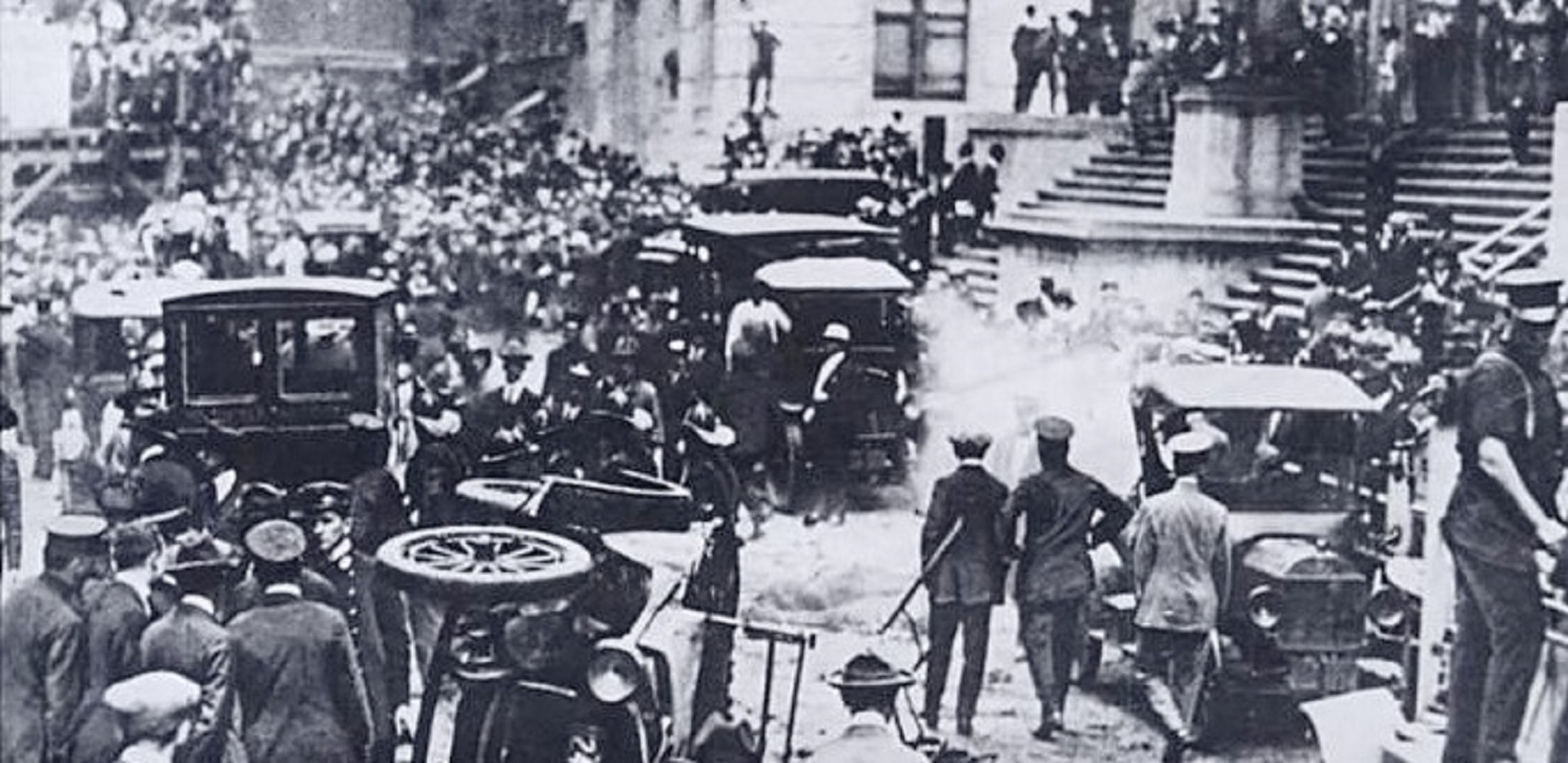Today marks the 100th anniversary of the 1920 Wall Street Bombing, the second worst terrorist attack in New York City history that killed 38 people and injured hundreds of others. A memorial event organized by The Hundred Year Association of New York, a non-profit organization that recognizes those dedicated to public service, will be held today at 11:30 AM at the very site of the explosion — 23 Wall Street across from Federal Hall. During the event, Brian Andersson, the city’s former Archives Commissioner who spearheads the memorial, will read the names of those killed. “I’ve known this fact about my hometown my whole life and decided that it should be commemorated properly,” Andersson told Untapped New York yesterday. “As there were no plans by anyone to do something, I’ve taken it upon myself.”
On September 16, 1920, as Wall Street business clerks were on their way to lunch at noon, a horse-drawn cart parked at the corner of Wall and Broad Streets, in front of the U.S. Assay Office and across from the J. P. Morgan building, exploded into metal fragments, immediately killing more than 30 people and injuring 300 some, according to the FBI.
 Photo of the aftermath of the Wall Street bombing by New York World-Telegram and the Sun Newspaper Photograph Collection from Library of Congress
Photo of the aftermath of the Wall Street bombing by New York World-Telegram and the Sun Newspaper Photograph Collection from Library of Congress
The cart carrying 500 pounds of dynamite and heavy iron weights was driven by a man who walked into the crowd minutes before the explosion, whose identity remains mysterious until this day. Window panes were shattered, and the streets were covered with broken glass and dead bodies. The victims were not the rich, but working-class people.
 The old J. P. Morgan building where a bomb exploded nearby in 1920 was never repaired.
The old J. P. Morgan building where a bomb exploded nearby in 1920 was never repaired.
The police ultimately decided that the bombing was a terrorism plot planned by anarchists and communist sympathizers who were staunchly anti-capitalist. However, the evidence was scant, with the only promising one being a letter carrier containing anarchist flyers found by the police prior to the explosion. After investigating thousands of peoples and political radicals, communists, and anarchists of foreign origin, the FBI and the Secret Service dropped the case in 1940, without convicting any suspects with the crime.
 The shrapnel damage to the building is still visible today.
The shrapnel damage to the building is still visible today.
Unlike the 9/11 which aches the hearts of many New Yorkers for the decades to come, the 1920 Wall Street Bombing is mostly a forgotten moment in history. The remnants of the attack were cleaned up overnight, and Wall Street went back to business as usual the morning after the attack. The bombing was slowly fading out of the headlines, and no memorial was ever created in the aftermath of the event. To this day, people who walk by can still witness the shrapnel marks on the facade of the old J. P. Morgan building at 23 Wall Street which have been retained as a physical remnant of the tragic event.
You can learn about this and other secrets on our Hidden Gems of the Financial District Tour:
Next, check out an exclusive clip of PBS “The Bombing of Wall Street” based on the 1920 Wall Street Bombing. Header image credit: Public domain from Wikimedia Commons.






